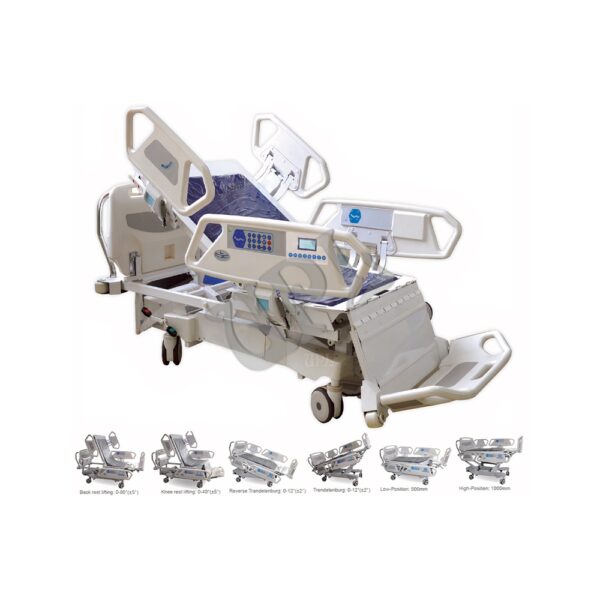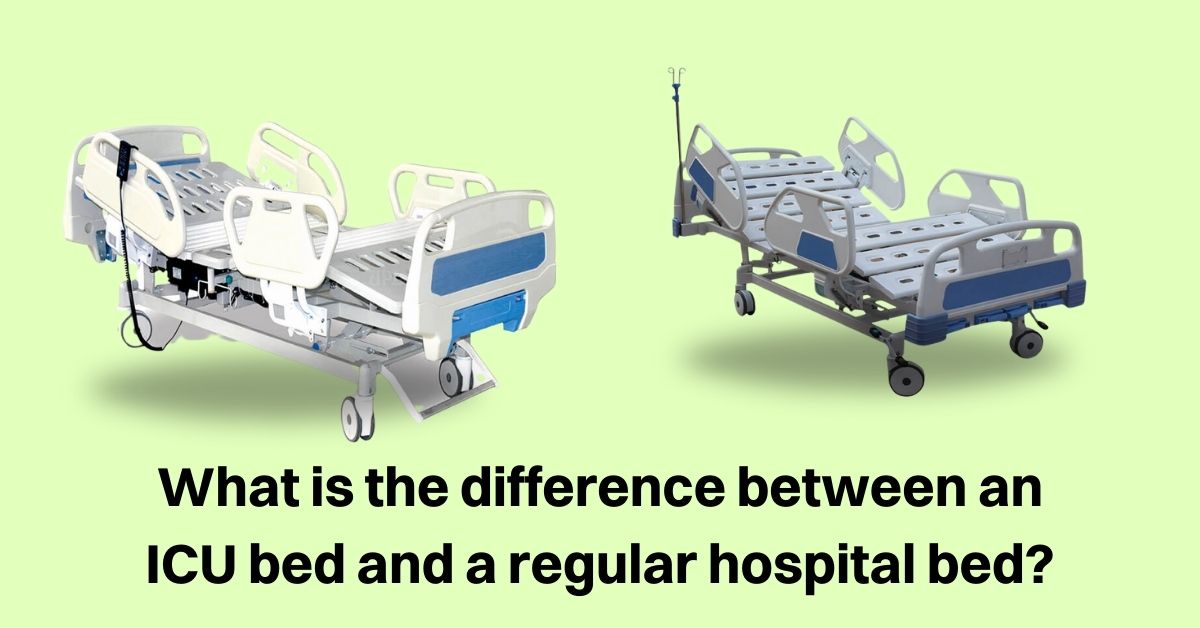In the complex landscape of healthcare, distinguishing between different types of hospital beds is critical in giving the proper degree of care to patients. One significant contrast is between Intensive Care Unit (ICU) and conventional hospital beds. Understanding the distinctions between these two types of beds is critical for ensuring that patients receive the appropriate amount of care for their individual medical issues.
What is the difference between ICU and normal ward?
Before getting into the intricacies of ICU beds, it’s important to understand the differences between critical care units and conventional hospital wards. Regular hospital beds are commonly seen in normal medical wards, where patients receive general medical care, routine treatments, and monitoring. These beds are appropriate for individuals with less severe diseases who do not require ongoing, high-level medical care.
An Intensive Care Unit, on the other hand, is a specialised space inside a hospital reserved for patients with serious or life-threatening situations. The ICU is outfitted with cutting-edge medical technology and a highly qualified medical team capable of delivering emergency and critical care around the clock. Patients in the ICU frequently have complicated medical requirements that necessitate constant monitoring, life support equipment, and specialised therapies.

What is an ICU hospital bed?
An ICU hospital bed is a specialised piece of medical equipment created to fulfil the specific needs of critically sick patients. Unlike conventional hospital beds, ICU beds are outfitted with a variety of technological technologies to help with the specialised treatment delivered in intensive care units. One major feature is the ability to electrically modify the bed’s position, which allows healthcare practitioners to optimise patient posture for a variety of medical procedures and treatments.
What is needed for an ICU bed?
To function effectively in an ICU setting, a hospital bed must meet specific criteria and be equipped with the necessary features. Here are some key components and requirements for an ICU bed:
- Electric Adjustability: ICU beds are equipped with electronic controls that allow for rapid and exact changes to the bed’s height, head, and foot positions. This is essential for carrying out medical operations, delivering treatments, and maintaining patient comfort.
- Advanced Monitoring Systems:ICU beds are outfitted with advanced monitoring devices that enable healthcare workers to constantly check a patient’s vital signs. This comprises ECG, pulse oximetry, and respiration rate monitoring, among others.
- Versatility in Positioning:ICU beds should be highly flexible in terms of patient placement. This adaptability is critical for medical treatments, enabling best patient comfort and avoiding issues linked with extended bed rest.
Difference between an ICU bed and a regular hospital bed?
The primary differences between an ICU bed and a regular hospital bed lie in their design, functionality, and the level of care they facilitate. Here are some key distinctions:
- Intensive Monitoring: ICU beds are outfitted with modern monitoring equipment that constantly check a patient’s vital signs. Regular hospital beds may have rudimentary monitoring capabilities, but they are not as extensive as those found in ICUs.
- Electronic Adjustability: ICU beds are electrically adjustable, allowing healthcare providers to precisely modify the bed’s position. While regular hospital beds are adjustable, they may still require manual operation.
- Specialized Features: Additional features on ICU beds include built-in scales, side railings, and life support system connectors. These characteristics are vital for satisfying the complicated medical requirements of critically sick patients.
Finally, the distinction between an ICU bed and a standard hospital bed is mainly based on their intended function and quality of care. While conventional hospital beds are appropriate for routine medical care in standard wards, ICU beds are specifically designed to address the needs of critically sick patients in an intensive care unit. The choice between the two is based on the severity of a patient’s ailment and the extent of medical intervention necessary.






